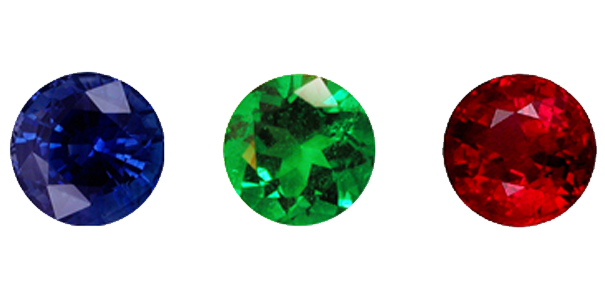
CHOOSE A COLOUR
G E M

PROPERTIES:
When selecting a coloured stone certain properties of the gem should be understood. Some gems are much more durable to everyday wear then others. For example, sapphires and rubies with stand everyday wear, while opals and emerald should be worn on occasion. If a fragile stone is mounted in a ring it will endure much more wear than if it were mounted in a pendant. J. B. Simpson & Sons can recommend and design mountings that will protect fragile gems enabling increased wear.
SATURATION
What we look for in a fine or gem quality stone is consistency and fluency of colour. This does not imply a very dark or light colour, but a balanced fullness that has a slight transparency.
LUSTRE
This is a very important aspect of grading colour stones. Since coloured stones have different Reflective and refractive characteristics than that of a diamond, some light will travel within the gem and be lost through the pavilion (or belly) of the stone. It is the wave-length motion of colour glistening as if the colour was alive. The difference between very good lustre and poor lustre is obvious to the untrained eye.
CLARITY
Certain coloured stones characteristically have more inclusions or flaws than others. However, gems with minimal blemishes, or in some cases no inclusions at all, command the highest value.
CUT
Coloured gems are available in all shapes as well. Most stones can be facetted like a diamond, except gems like opal and turquoise. These gems are cut and polished into a cabochon shape (an oval or round polished dome shape).
The proportions of coloured stones are generally different from diamonds. The pavilion (or belly) of the gem usually has more depth and slightly different angles. This greater surface area allows for more facets, which, increase the internal reflection of light and overall lustre of the gem. The faceting of a gem must be symmetrical, sharp and clean to attain a very good cut grade.

